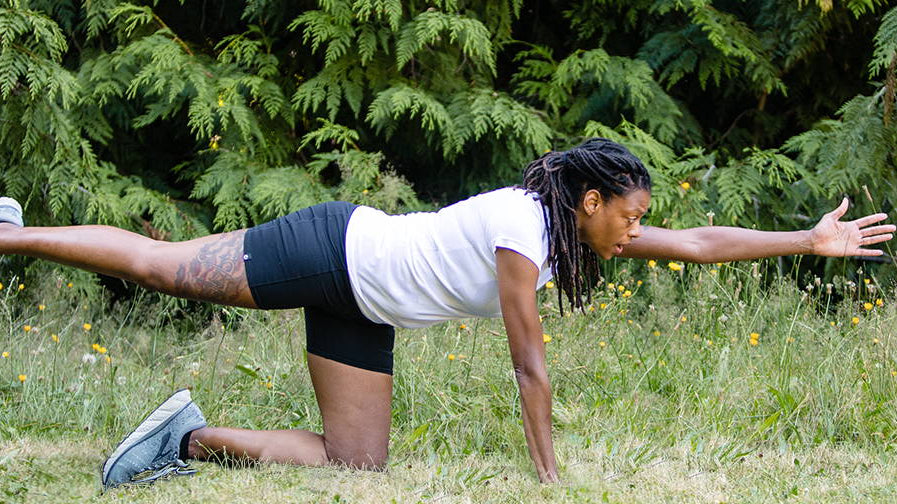Running needs to come with rest. Whether perusing #restdaybrags or reading about the importance of sleep, anecdotal and empirical evidence abound. Sometimes the right balance of pushing and pausing can be easier to strike on a micro scale. Many of us have fretted about an unscheduled day off, slower miles, or a cut repeat, but usually the immediate fatigue strengthens trust in the decision. Equally important, though, are the bigger, more cyclical breaks. When no longer on a high school or college team with defined seasons, what is the best way to decide when to back off and for how long? Four Haute Volée athletes weigh in on the art of the running break.
Cate
I planned to take two weeks off this July when I finished my racing season, but I got busy at work in June and I was having trouble finding time to train. I knew there were other people out there who had harder lives than me...like women running morning treadmill 20 milers before nursing their twins and heading off to their jobs in finance. Or something. Instagram or my brain was never short on supplying these allegedly inspiring stories. So I wondered, was my problem really my schedule, or was it me? Why couldn't I be motivated and get it together?
After a couple conversations with my coach and a weekend away at Lauren Fleshman’s Wilder Retreat, I decided it was okay to admit defeat. I still don’t know if it was my work schedule, overall stress, or if I was doing something else wrong, but I knew that my training approach wasn’t fun or satisfying anymore. So at the end of June I canceled my last race and started the break. And it felt awesome! I ended up taking almost four weeks off. Getting out of training mode let me release the pressure that I’d put on myself. Part of me was afraid I wouldn't want to start training again after that. But I'm not sure if you can command motivation. I just know I didn’t have it. Thankfully, mine returned. Taking days off from running helped out, but the mental break is what sealed the deal.
Listening to your body--and your mind--for when it's time for a break is crucial.
Theresa
Not having defined seasons is difficult – and even more difficult is the fact that we crave racing and can’t help but sign up for one race after the other. In these times it’s so important to listen to your body. When I was training to qualify for the Olympic Trials in 2017, I ran my highest mileage week five weeks out from CIM and then suddenly out of nowhere my foot started hurting. As I described in my training log, it was like I couldn’t get my foot to push off the ground. It wasn’t a sharp pain, and I could tell that it definitely wasn’t bone pain or plantar fasciitis, but something just wasn’t right and I knew that this was NOT how I wanted to race at CIM. With four weeks to go, I was scheduled to do my most important run of the cycle – 16 miles at marathon pace. Although I was able to run, I wasn’t comfortable with how things were feeling and I knew there had to be a solution – and ultimately rest was a big part of it. Instead of pushing through the pain, I made the decision to instead focus on the health of my foot, see a PT, and completely drop my mileage to focus on a recovery plan.
At the time, this was an extremely difficult decision to make. What if my foot didn’t get better? What if my time off was wasted? Maybe I should have just pushed through and taken a break after the race? Nope. Not for me. I wasn’t having it. I ended up figuring out that I had a weakness in a muscle in my foot, and I chose to do vigorous exercises for that easy week – not worrying about moving my MP run out a week or skipping it altogether. What was important to me was feeling good on race day. As runners we are stubborn, and we want to believe we are invincible, but I find that listening to my body is my greatest indicator of when rest is needed because only it can provide the proper feedback to help me feel my best. [Editors note: she crushed her OTQ at CIM.]
Jocelyn
For most of my running career, I thought it showed strength to run a lot of miles and run everyday, no matter if you were tired, or sick, or if the weather was over one hundred or less than 0 degrees. In my experience, this is a common relationship that distance runners have with breaks. I fret about getting out of shape, not getting my daily running endorphins, general FOMO from seeing my running buddies’ adventures on Strava…the list goes on. I fully understand the importance of breaks (and I’ll even encourage others to take them!), but I have honed my ability to talk myself out of them.
As I develop as a runner, my relationship with breaks is evolving. I’ve been training without a high school or collegiate team for over three years now, and this has expanded my running view well beyond seeing just one season at a time. I still struggle with talking myself out of breaks, but I now have a new perspective. Breaks are instrumental, not only in restoring the body but in resetting the mind. I reward myself for taking a break by doing other things I enjoy - this ranges from taking myself on a coffee date to plan training/work/goals for the next cycle or going for a hike or a vacation with friends. After a race I’ll take off an amount based on the distance. This is two weeks for a marathon, one day for a 10k, and some amount between that for the in-between races. If I have a trip or vacation planned, I will only run if I feel like it. I also recently started to use heart rate as a good metric for returning to running. I found that I can establish a baseline “recovery run effort HR” - for me this happens to be around 150 bpm average over five miles easy. I can use this to see how recovered I am post-race and then determine when I should start pushing workout and long run efforts. As the title of this blog implies, the running break is truly an art, and I expect my views and methods for it will continue to evolve for as long as I run!
Siobhan
I’ve been a break stickler over the past six years. This identity has kept me healthy, but probably left some performance on the table. Running two marathons a year, the pattern of a culminating event helped to define the break. I’ve transitioned from two weeks off to 7-10 days of no running. This spring was the first time in five years I hadn’t done a spring marathon. Come mid-June, I was 18 weeks into a segment and knew the end should come soon. Despite taking a break eleven times in a row, it felt harder without a culminating moment. I had run a huge PR in the 5K, but was there more in the tank? One more second would bump me to the next minute (xx:59). I let it go and let non-running life stress and summer weather seal the deal and before I knew it, I was back to an introductory fartlek and the break was a thing of the past.
This formula is simple, but it isn’t always easy. At the Boston Marathon in 2016 and 2017 when it was unseasonably hot, I missed my goal by 20 minutes. It didn’t reflect the near perfect training segment, but I still shut things down without capitalizing on the fitness at another race. I tried to remember that not being injured or worn out is something worth noticing as much as PRs. Sometimes, despite all the care, the scheduled break hasn’t worked for me. After Boston 2018, even though I took my normal break, my foot hurt throughout May. I fixated that I had somehow messed up the break, taking awhile to open up to the possibility that I could take another break a month later. The formula wasn’t really fixed. I realized there was nothing magical about running a November marathon. After taking another 12 days off, I was able to start my buildup totally healthy and went on to run an OTQ in Houston. It seems like a neat package in retrospect, but the decisions still felt hard to make in the moment.
Like everything in running, breaks are highly individualized. Sometimes we need them more often than others. Sometimes life, family, friends, or work drive the break. Sometimes, it’s a rare moment where we ignore the break and go for it. Regardless, there’s no shame in the break game.










